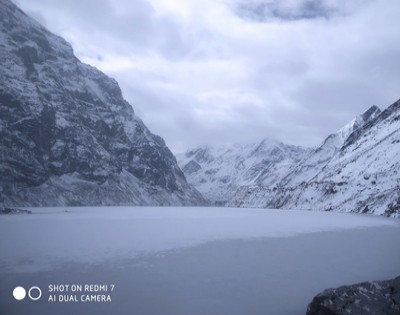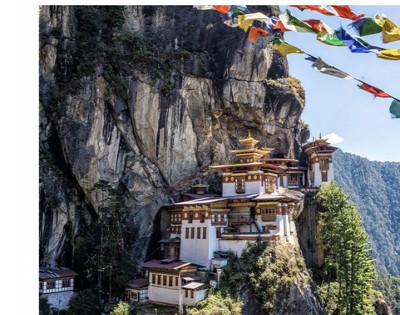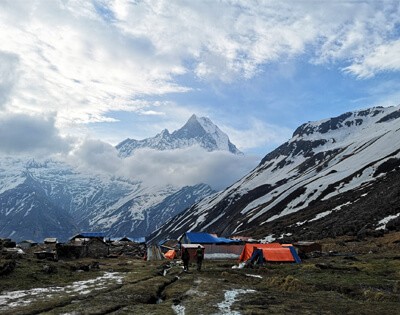Fill your adventure spirit by trekking in this mind-blowing high-altitude region of Nepal. Everest region has several trekking routes, allowing for multiple options to indulge in the breathtaking Himalayan journey. Global Adventure Trekking profiles some of the most popular trekking packages in the Everest region.
Everest Base Camp Trek is the most popular trek route in the Khumbu region that leads you to the rudimentary campsite at the base of Mt. Everest. It is a well-established trail used by trekkers as well as mountaineers during their ascent and descent. It is a 12-day walking journey that blends adventure, culture, and spiritual healing in the lap of the mighty Himalayas. 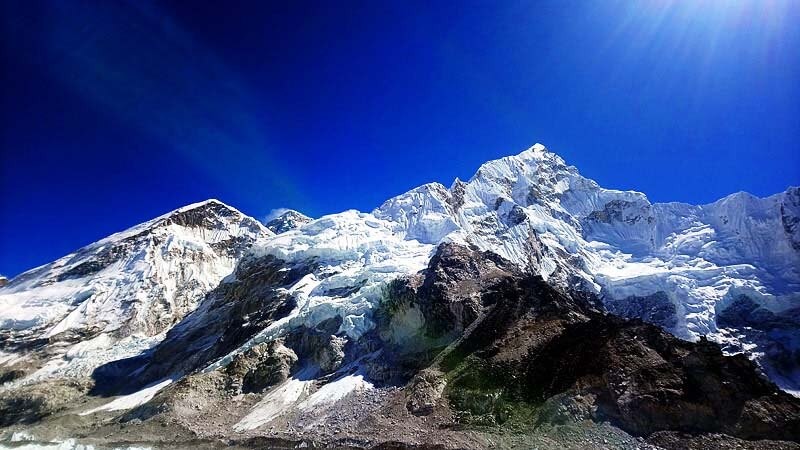
The trip begins with a scenic flight to Lukla and acclimatization at Namche before hopping off to the base camp at an elevation of 5,364 m. In this trek, you'll walk through forests and rugged mountain terrain and traverse serene Sherpa village settlements in the spectacular Everest landscape.
This trek boasts the incredible sight of the majestic Everest range, featuring iconic Mt. Everest, Pumori, Mt. Lobuche, Mt. Ama Dablam, etc. The overwhelming beauty of 8,000 m. peaks, heart-melting Sherpa hospitality, and astonishing wilderness make this trek a must-do activity.
If you yearn for spending isolation in the highlands of the Everest region refrain from the utterly commercial EBC path and focus on Gokyo Valley. Tucked amidst elegant snow-clad mountains, Gokyo Lakes comprise the world's highest freshwater lake system at 4,700–5,000 m. elevation.
Gokyo Lakes Trek presents exposure to impeccably clean, emerald-green freshwater wetlands flaunting their beauty in fascinating attire. It is a fun-filled trekking experience that allows you to soak in the absolute beauty of the untamed Himalayan environment and delve into the serenity of sparkling turquoise lakes. The highlights of these treks are magical sights of oligotrophic alpine lakes, Gokyo Ri (5,357 m), the Everest Massif range, and the culture of Sherpa ethnic tribes.
EBC three-pass trek (aka high-pass trek) is one of the most challenging treks that requires a high level of physical and mental preparation. The trek covers all major spots in the classic EBC trek and crosses three high Himalayan passes: Kongma La (5,535 m), Cho La (5380 m), and Renjo La (5,388 m). The three-pass trek grants mind-blowing views of Himalayan hulks, including Mt. Everest, Lhotse, Cho Oyu (8,201 m), Makalu (8481 m), Peak 38, Island Peak, etc.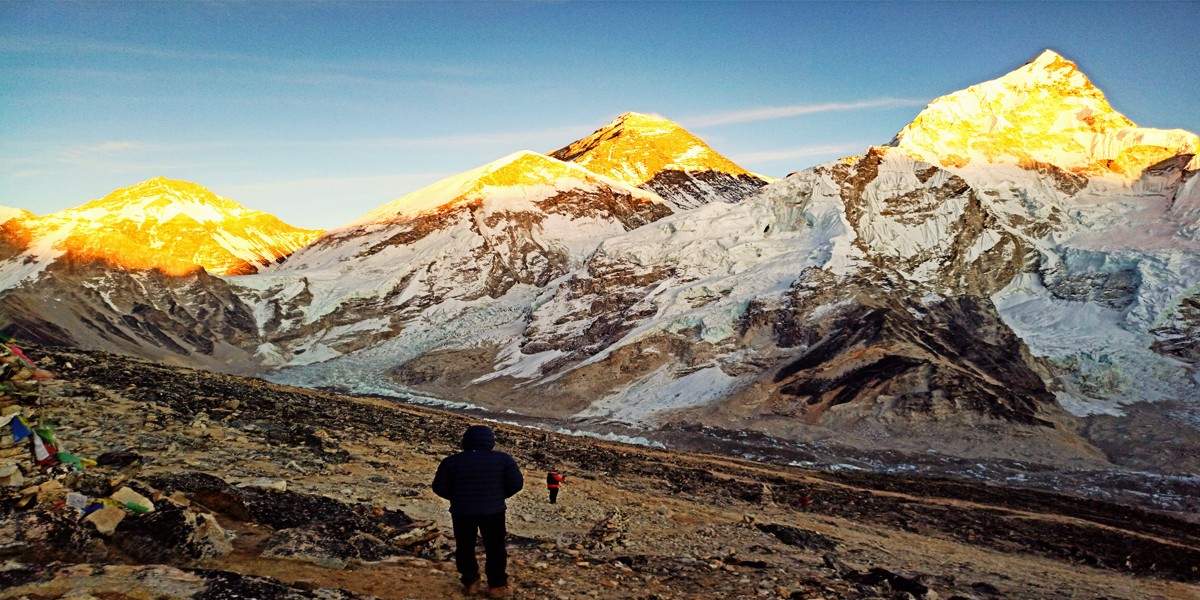
The Everest three-pass trek is a strenuous 16-day walking activity in the Everest region that escapes the boundary of perception. The trek pushes your body out of your comfort zone and tests your limit, but ultimately gives you a profound feeling of fulfillment and pleasure.
Everest Chola Pass Trek is also a 16-day adventurous journey that combines classic Everest Base Camp, Gokyo Lake, and Chola Pass in a single package. The trek follows the standard trail to EBC and then passes through the ice-cold path to the top of Chola Pass at 5,416 meters. After that, you'll trek down to the hill, crossing Ngozumba Glacier before reaching the uncongested route to Gokyo Lake. From there, you'll have to walk for an hour to reach the hidden paradise of the Himalayas pristine Gokyo Lakes.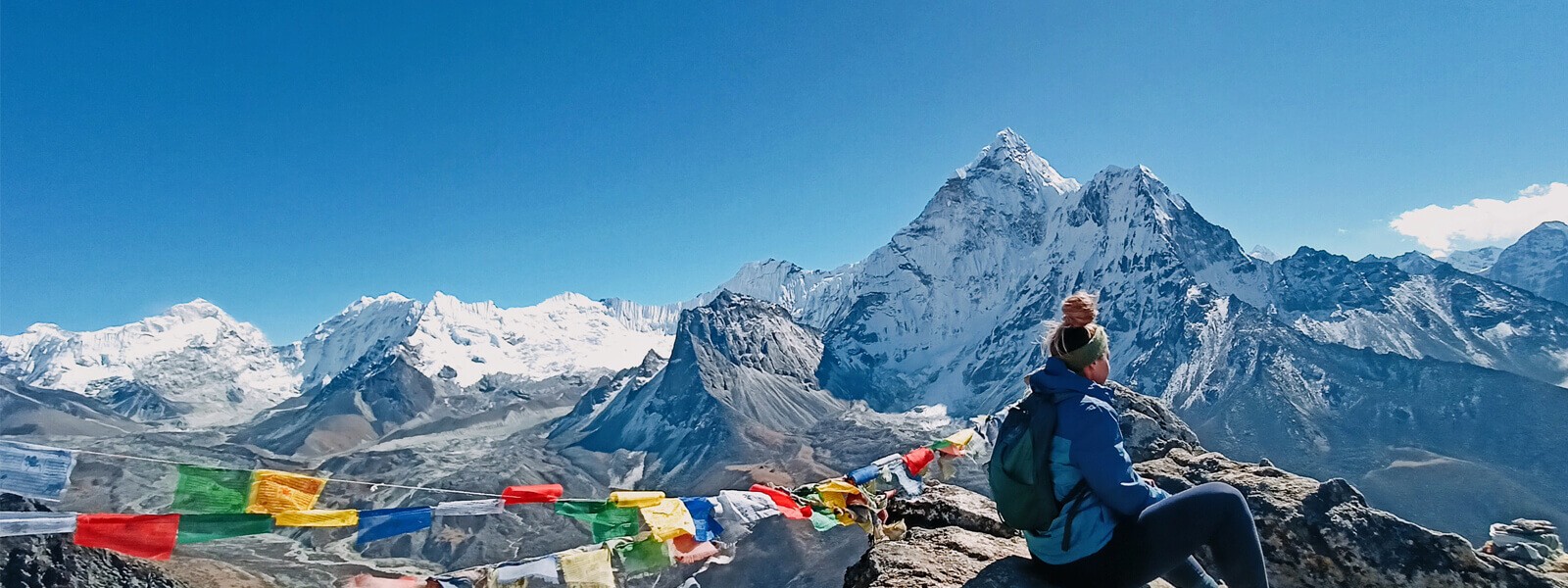
After exploring the magical charm of turquoise lakes and the imposing Himalaya backdrop in Gokyo Ri, you'll trek back to Namche Bazaar.
Also known as Everest Short Trekking, Everest Panorama Trekking is designed to experience the magnificence of the Everest region in a short period of time.. Is Everest Region trekking a long-standing dream of yours? Is your dream unfulfilled due to a lack of time and physical prowess to make uphill hikes? It's high time to turn this into reality with Everest Panorama Trekking. You can complete this trek in just 9 days without missing out on important attractions of the region. The maximum elevation you'll go up to is just 3,900 m. so; you don't need great stamina and high preparations to embark on this trek. Being a part of this trek, you'll
Relish the splendid views of snow-capped Himalayan giants (Mt. Everest, Lhotse, Ama Dablam, Thamserku, etc.)
Visit Namche, the tourist hotspot in the Khumbu region that embraces modernity as well as ancestral Sherpa heritage
Visit the 500-year-old Tengboche Monastery in the Khumjung region
Vegetation/Flora/Fauna in Everest Region
Whichever Everest region trek you choose, you'll need to receive a Sagarmatha National Park entry permit. Sagarmatha National Park is a one-of-a-kind national park in Solukhumbu district that shelters high Himalayas ranging from 3,000 m to 8,848.86 m. While trekking, you'll wind the way through forests that mainly comprise fir, Himalayan birch, rhododendron, etc. Since most treks prevail at elevations of 4,000–5,000 m, you are more likely to see juniper and rhododendron trees.
The land above 5,000 m. is mostly barren and the only floras you'll witness are mosses and lichens.
The UNESCO World Heritage Site-enlisted Sagarmatha National Park is home to 208 bird species. Birds like the Himalayan Monal pheasant, bearded vulture, snow cock, alpine chough, etc. breed in the high mountain ranges of the Khumbu region.
The stunning protected area also shelters some of the rare animals like Himalayan Thar, Himalayan serow, musk deer, snow leopard, etc.
People inhabiting the Everest Region
The high-altitude Everest Region hosts the Earth's highest permanent human settlement at 17000 feet above sea level. Those living on the slopes of Everest are Sherpas, the Tibetan ethnic tribes with distinct cultural and religious practices. Sherpa people regard Mt. Everest as a sacred landscape and highly value life and the beauty the region provides. Due to their genetic adaptation to living in extreme altitudes, they are experts in mountaineering and serve as guides in Everest expeditions.
The local people typically follow Tibetan Buddhism and have numerous gompas scattered throughout the region. They focus on monastery practices and decorate their stupas, gompas, and chortens with prayer flags. The Everest region trek is the most popular in the world, listed on the Natural World Heritage Site (UNESCO), and offers everything you want.




